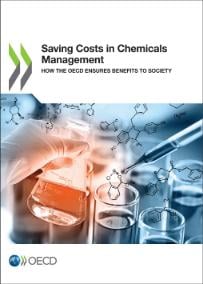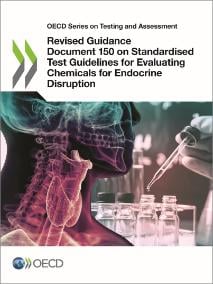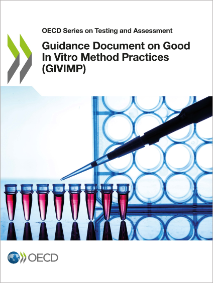Testing of chemicals
Focus
-
Scientific Journals and OECD sign a Memorandum of Understanding on AOP development co-operation
The OECD is collaborating with two scientific journals, ‘Environmental Toxicology and Chemistry’ and ‘Environmental and Molecular Mutagenesis’ in the field of Adverse Outcome Pathway (AOP) development to increase the number of AOPs developed, reviewed and published. This collaboration has been formalised through two new Memoranda of Understanding (MoU), signed in October 2021 and this January.
Read more -
Omics technologies in chemical testing
The OECD is committed to using state of the art tools to evaluate chemical safety. As a first step towards using new technologies for assessing the effects of chemicals, the data collected and reported can be standardised to all decision makers to more easily evaluate effects and share information.
Read more -
NANOMET: Towards tailored safety testing methods for nanomaterials
Just like any other chemical substance, nanomaterials have to be assessed for their safety using appropriate tools and methodologies. For that reason, the OECD Programme on Manufactured Nanomaterials and the OECD Test Guidelines Programme collaborate to identify and develop standardised methods that can be used to generate relevant and reliable data.
Read more
OECD assists countries in harmonising Guidelines for the Testing of Chemicals and Good Laboratory Practice, in order to ensure high quality and reliable data and for countries and industry to fully benefit from the OECD agreement on Mutual Acceptance of Data (MAD) and avoid duplicative testing.
Key areas of work
MISSED OUR WEBINARS? Watch the video recordings
|
> Webinar Series on Emerging Science to Improve Chemical Safety |
PUBLICATIONS
Saving Costs in Chemicals Management: How the OECD ensures benefits to society
|
|
Guidance Document on evaluating Chemicals for Endocrine Disruption
|
Guidance Document on Good In Vitro Method Practices (GIVIMP)
|
ENGAGE WITH US
- To receive our latest news, publications and events, sign up to the Chemical Safety and Biotechnology Update newsletters.
- Contact: [email protected]
- Stay tuned on Twitter: @OECD_ENV
- Watch our videos on our YouTube channel


